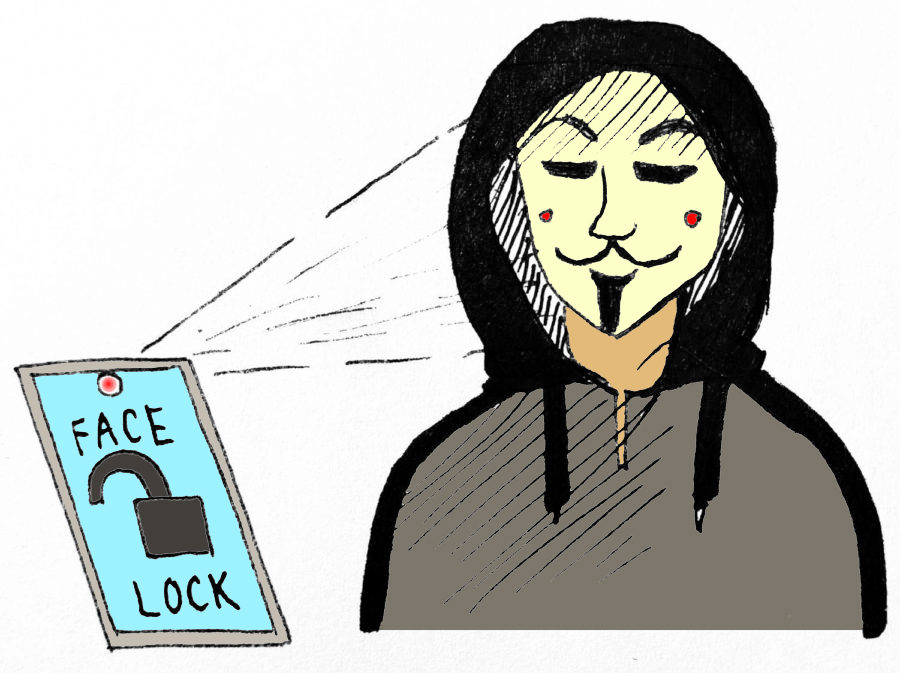Consumers Must Face the Truth of Unlocking Their Phones
As the use of facial recognition software infiltrates campuses, the privacy concern extends from just replacing identity cards to login methods for cell phones. Similar technology used to scan students’ faces to unlock campus gates has been accessible on mobile devices since its release in Japan in 2005 and its mainstream release in 2017 with Apple’s iPhoneX. Yet, facial recognition is a flawed, expensive system that effectively increases the price for smartphones and is a subject of controversy regarding the right to privacy protected by the Fourth and Fifth Amendments.
Facial recognition on phones currently consists of an infrared camera, dot projector and flood illuminator that recognizes the owner’s face even when obscured by accessories or cosmetics. As numerical passwords and fingerprints become increasingly common, facial recognition is the next wave of login method for electronic devices. However, what consumers trade for convenience, depending on their phone model, is the risk of easier break-ins by thieves or law enforcement.
According to an experiment conducted by Forbes, a 3D image of a head can unlock most Androids: an LG G7 ThinQ, a Samsung S9, a Samsung Note 8 and a OnePlus 6; the iPhoneX and Microsoft Windows Hello did not unlock with the head model.
Because Androids are often cheaper than Apple devices, it is inconclusive if the facial recognition itself is to blame for the malfunctions or if Androids have fewer login features to offer than Apple smartphones.
In criminal cases, the inability to open a suspect’s phone without the owner’s expressed permission can mean the difference between finding evidence of criminal activity and the suspect walking free. Companies Cellebrite and Grayshift are able to unlock iPhones without the passcode, and the Secret Service and Immigration Customs Enforcement (ICE) have invested millions of dollars into these companies’ services, according to Fortune. Within a few years, facial recognition may not be the safest login method compared to other biometric logins like iris or fingerprint scanning because of how accessible the phone’s contents are even with the lock.
With the current technology, the only way for facial recognition to be effective alone is to invest in an expensive mobile device upwards of $1,000, and the software can still malfunction. In combination with an alphanumeric or personal identification number (PIN) code, facial recognition has the potential to be the ultimate alternative to fingerprints and swiping, but what is a trend now can easily morph into the next security breach and identity theft.
Your donation will support the student journalists of Portola High School. Your contribution will allow us to purchase equipment and cover our annual website hosting costs.

Jane Zou is a staff writer and resident cartoonist for the Portola Pilot. As one of the few sophomores in the production, Jane is excited to contribute...




